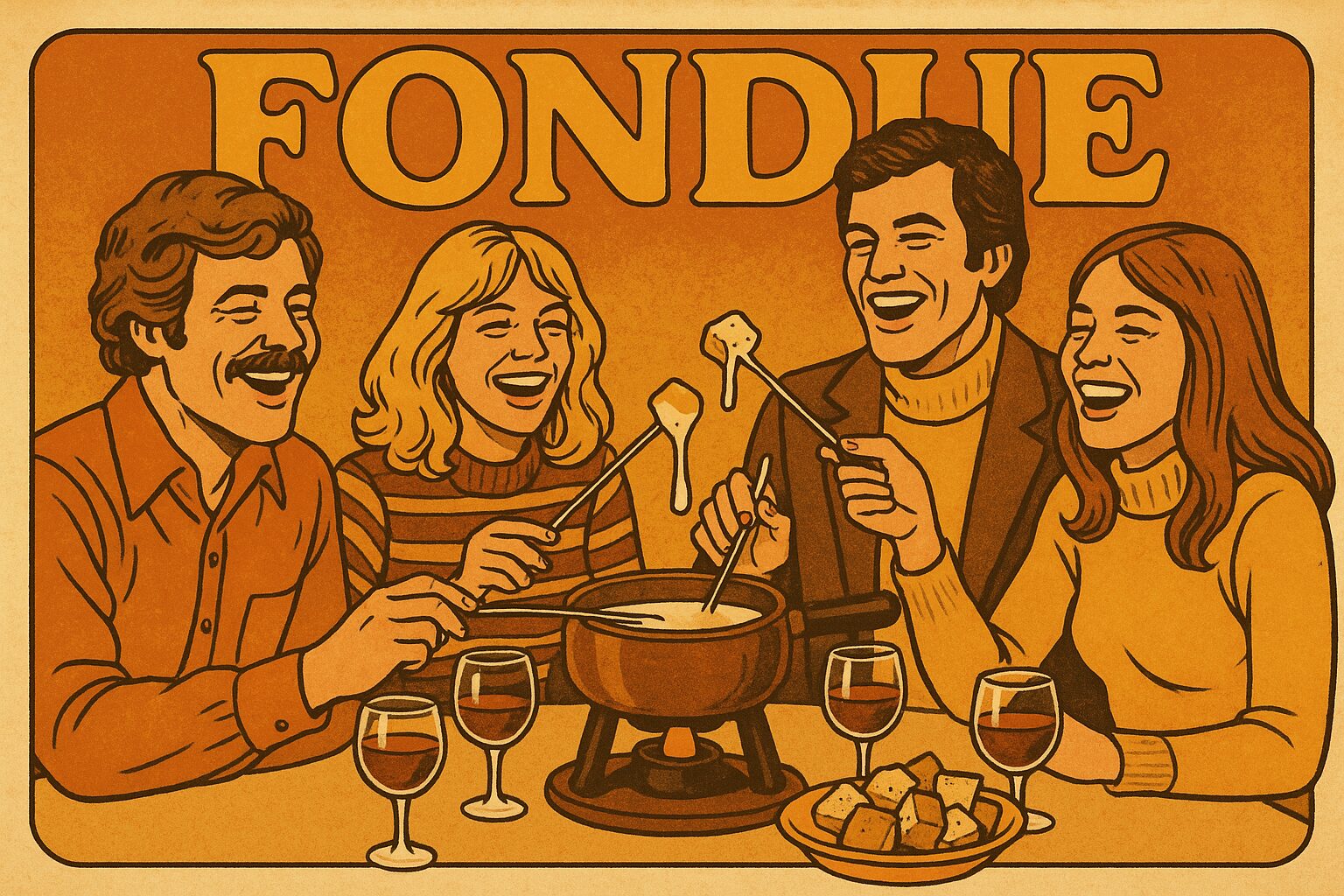In a time dominated by screens and swipe culture, the last thing you might expect to resurface is fondue. Yet this gooey, shared ritual from the 1970s is bubbling back into popularity. Once the centerpiece of kitschy dinner parties, fondue is now making a comeback as a symbol of connection and culinary mindfulness. As communal eating declines and loneliness statistics soar, fondue offers a quiet but potent antidote: real-time, face-to-face interaction over a shared pot. The return of this ritual isn’t just nostalgic—it’s healing.
The stats underscore the shift. According to Tastewise, interest in fondue rose by over 16% in the past year. The Melting Pot, the Florida-based fondue restaurant chain founded in 1975, is planning a nationwide comeback in 2024, signaling renewed demand for shared culinary experiences. This resurgence is not a coincidence—it’s a social response to growing disconnection.
Trend Snapshot
| Aspect | Details |
|---|---|
| Trend name | Fondue 2.0: Collective Eating in the Digital Age |
| Key ingredients or components | Cheese, chocolate, broth bases; fruits, breads, meats for dipping |
| Current distribution | Home gatherings, boutique restaurants, experiential dining venues |
| Notable restaurants or products | The Melting Pot (USA), Rok N Fondue (California), modern fondue kits |
| Popular hashtags and social media presence | #fondueparty, #communalfood, #slowdining, #fonduevibes |
| Target demographics | Millennials, Gen Z, nostalgia seekers, social diners |
| The “wow factor” | Hands-on, analog interaction; fun, sensory dining; togetherness |
| Trend phase | Cultural revival and reinvention in post-isolation context |
The Melting Revival
Fondue is back. The Melting Pot, America’s most iconic fondue chain, is leading the charge with a 2024 relaunch campaign focused on interactivity and nostalgia. New restaurants are emerging too, offering modern spins on the format: think vegan cheese, globally inspired dipping sauces, or broth-based fondues resembling Japanese shabu-shabu.
The reasons are multilayered. As home cooking hit a cultural peak during the pandemic, people longed for hands-on, collaborative food experiences. Fondue’s tactile, immersive nature delivered just that. Its performance-like structure—heating, dipping, waiting, sharing—contrasts sharply with the transactional feel of food delivery or solitary eating.
Loneliness on the Rise
Behind fondue’s comeback lies a quieter crisis. In 2023, 25% of Americans aged 18 to 24 reported eating all three meals alone the previous day—almost double the rate from two decades ago. And according to a recent APA poll, nearly one-third of U.S. adults feel lonely at least once a week.
This “loneliness epidemic” isn’t just about solitude; it’s about a loss of communal rhythms. Shared meals have historically provided emotional anchors and micro-rituals of care. Fondue, with its enforced slowness and co-dependence (you can’t rush cheese), becomes a countercultural act—a pause, a presence, a collective experience.
Why Fondue, Why Now?
The appeal of fondue today isn’t just culinary—it’s psychological. The act of reaching into a shared pot requires eye contact, patience, and timing. Everyone must wait their turn, dip intentionally, and, most importantly, remain at the table. This creates natural conversation windows and unstructured interaction—increasingly rare in a fragmented digital culture.
Unlike fast-casual dining, fondue isn’t optimized for speed. It discourages phone use, disrupts multitasking, and demands presence. Its analog nature is its superpower: fondue is hard to consume mindlessly. In a way, it serves as a dinner table-designed detox for a hyper-connected generation.
Modern Rituals, Old Soul
Today’s fondue renaissance includes diverse reinterpretations. Rok N Fondue in California blends classic cheese pots with broth-based cooking, allowing guests to design shared meals that resemble hot pot or tapas. Other formats include dessert-focused fondues or those paired with curated wine flights.
What unites them is ritual. The process of preparing ingredients, assembling the pot, waiting for the melt, and sharing the outcome builds anticipation and camaraderie. These shared experiences stimulate oxytocin release—the so-called “bonding hormone”—creating real physiological benefits during a time when connection is scarce.
The Aesthetic of Togetherness
Fondue’s revival is also aesthetic. In an age of curated tablescapes and experiential dining, fondue fits neatly into the narrative. Its visual drama—bubbling cheese, skewered treats, communal pots—is inherently shareable, yet grounded in real interaction.
The setup also resists individualism. There’s no plating, no personalization. Everyone eats from the same pot. This act of mutual compromise and timing may feel old-fashioned, but it’s precisely what makes it fresh again. It reclaims the social table from distraction and repurposes it as a space for slow, sincere togetherness.
Restaurants, Rethought
For restaurants, fondue offers a built-in experience. It requires time, attention, and often prompts guests to linger—a dream for venues focused on ambiance and community. Operators note that guests increasingly value interaction over mere consumption.
Post-pandemic diners are hungry for rituals that feel restorative. Fondue isn’t just retro cuisine; it’s sensory therapy, theater, and communal practice rolled into one. It’s also marketing gold: unique, participatory, and steeped in nostalgia, yet flexible enough for modern twists.
Conclusion: Melt, Dip, Connect
Fondue 2.0 is more than a food trend—it’s a response to a fractured cultural moment. It reconnects us with ritual, shared time, and the joy of being physically and emotionally present. In a landscape of meals eaten alone and lives lived online, dipping into the same pot may be the most radical act of intimacy we can share.
If you’re curious how restaurants are navigating new guest expectations with smart, low-cost ideas, check out our story on How Restaurants Turn Cost-Saving into Customer Delight.

